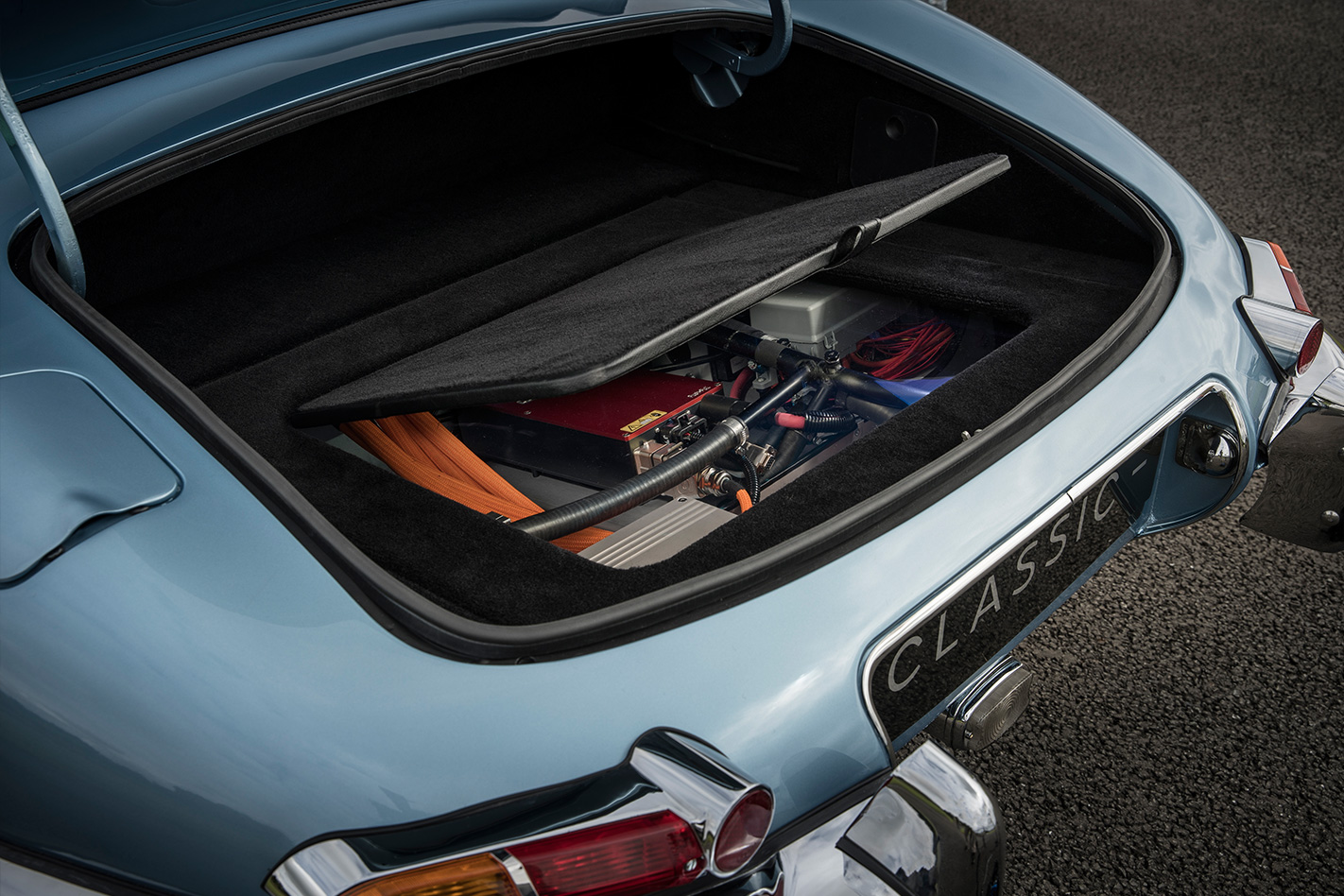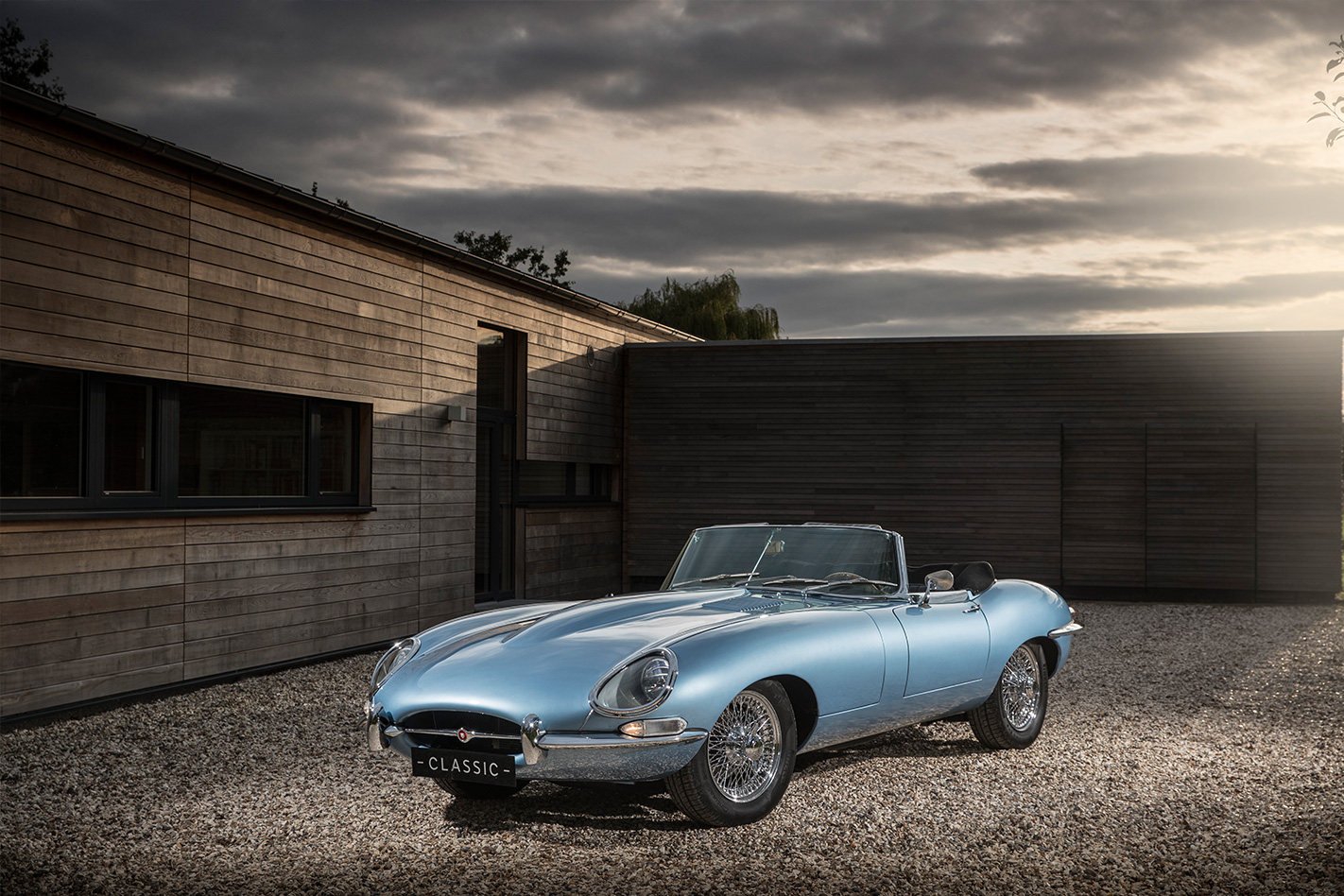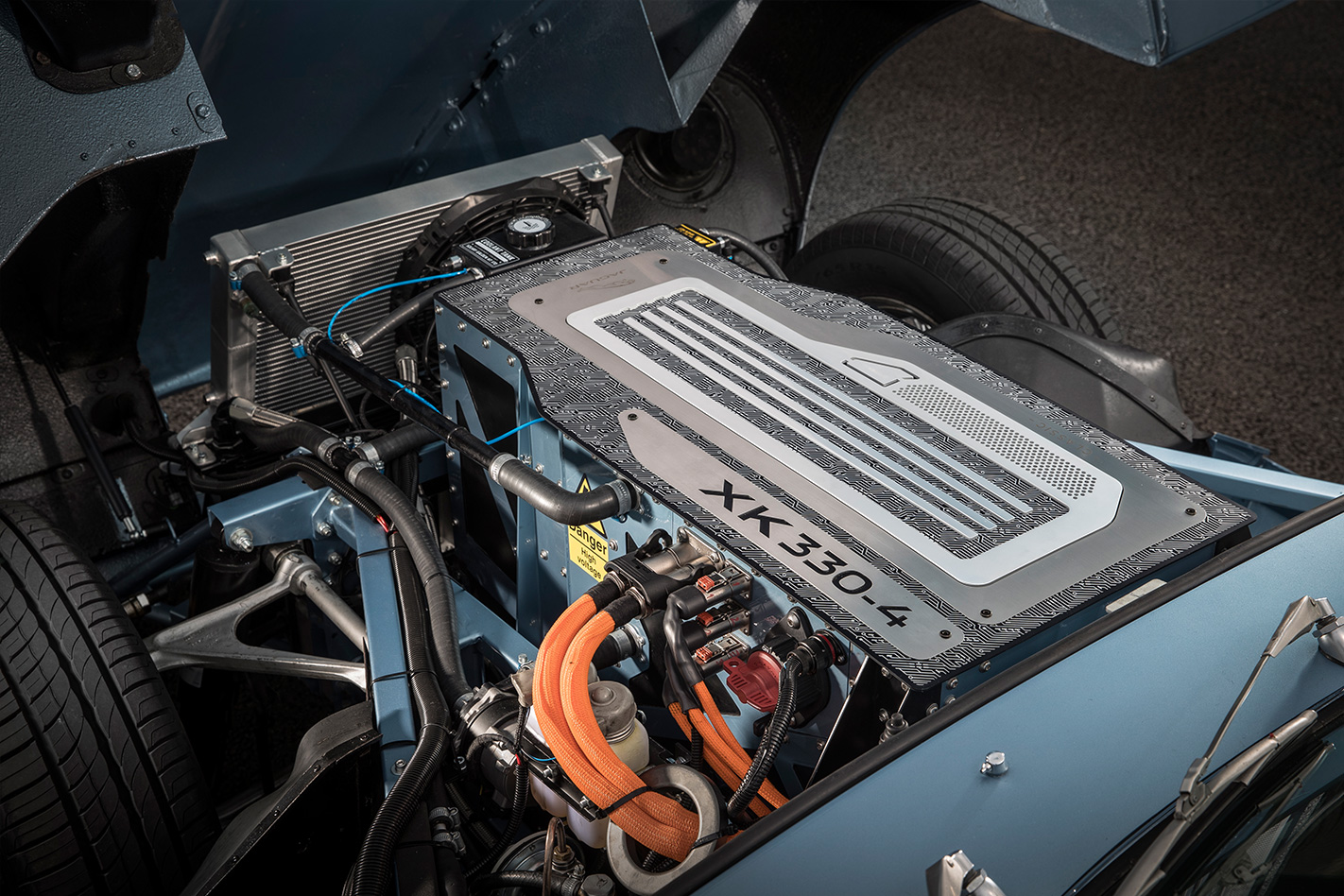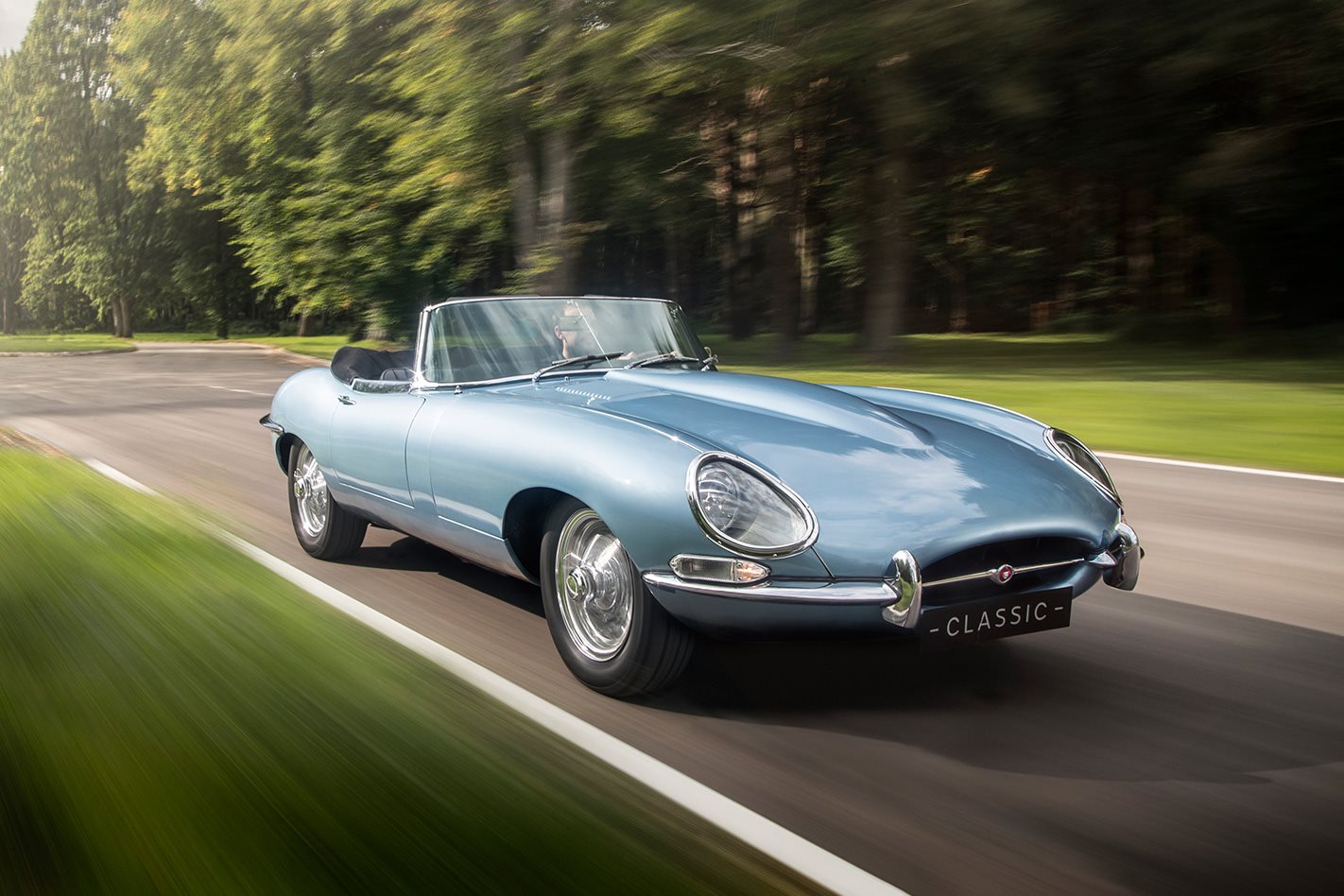“WE STARTED out calling it Project Marmite,” chuckles Tim Hannig, Jaguar‘s director, Classic Business as he contemplates the E-Type Zero, an Opalescent Silver Blue Series 1.5 from 1968 that ditches its six-pot powerplant for an electric motor instead.
“But then we changed it to Project Dylan. It seemed more apt. Bob Dylan swapped his acoustic guitar for an electric one in the Sixties and that caused a bit of a stir too,” he admits.

“We bought the car because it was very solid. We stripped it and did a partial restoration to make it a good base to start from. We disassembled the transmission and we were determined not to cut into anything structural, so all the brackets are exactly as they were,” he explains. “We’ve then designed the transmission so that it fits into the existing envelope of the structure.”

Indeed, there were some in the business who wondered whether these were feasible goals. “We had a debate as to whether this was technically possible,” says Hannig. “There was no debate that ‘if we could do it, would it make sense?’ It actually turns out much better than we expected,” he smiles.

“We’re trying to be sensible about it, gauge feedback and find out how big this opportunity is. There’s no data on this on which to form a decision because nothing like this exists,” he shrugs. But the installation as we see it here could have applications beyond E-Type.

“It was not only trying to build one car. That was relatively easy. We wanted to create a system of components that we could electrify on a relatively easy and affordable scale, that is a different task,” he says.

It’s not going to be cheap to buy though. If you were to ask for a car built from scratch, Hannig reckons you’d be looking at a bill for more than GBP300,000 (A$486,000). He does highlight a cheaper way of joining the club. “If you bought a Series 2 that is lower in price then that would come to GBP130-140,000. Which is still a lot of money.”







